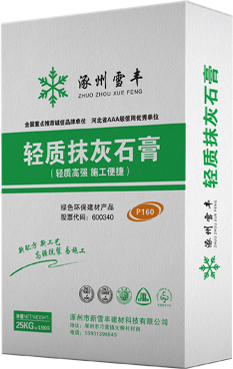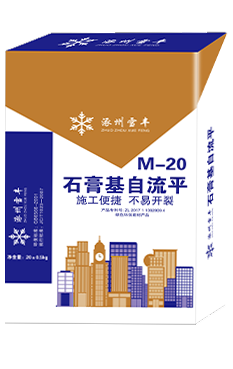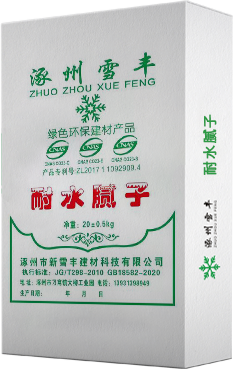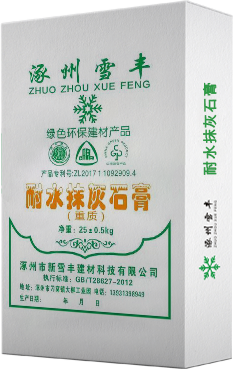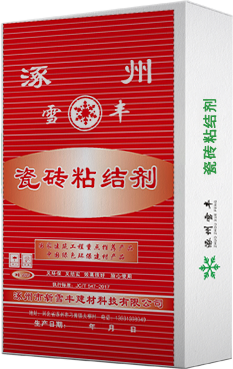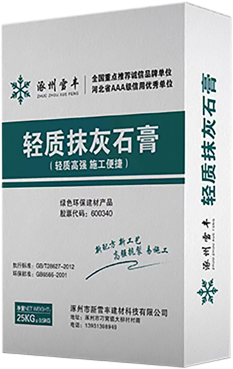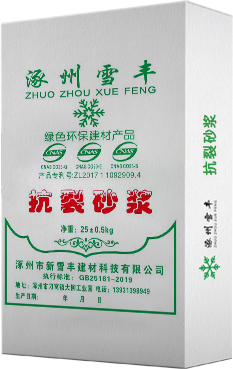
Polymer anti-crack mortar is an ideal material specially used for the overlay and plaster anti-crack of the insulation board. Shaped building materials products. The advantages and disadvantages of thermal insulation mortar directly affect the use effect and service life of the entire thermal insulation system. The thermal insulation system using this mortar to cover the surface effectively solves the thermal insulation, heat insulation, wind pressure resistance, fire prevention, freeze-thaw resistance, Hydrophobic, weather-resistant, flame-retardant, breathable, cracking, etc., at the same time, it has the advantages of good flexibility, high product bonding strength, good waterproof and anti-cracking effect, convenient operation, easy control, etc., which can ensure long-term use performance, environmental protection and safety.
Uses: Anti-cracking mortar is mainly used for the wall surface of polystyrene board (EPS) and extruded board (XPS) and the plastering layer of the ceiling insulation system in the "polystyrene board glass fiber mesh cloth polymer mortar method", which is easy to crack Repair of parts, refurbishment of old wall tiles, "cast-in-place concrete formwork with built-in insulation board" and surface crack resistance in the practice of rubber powder polystyrene particle insulation slurry.
The performance index is based on DBJ01-63-2002 <<Quality Inspection Standard for Exterior Wall Exterior Thermal Insulation Polymer Mortar>> Test item performance index test result Tensile bond strength (Mpa) Mortar-polystyrene board normal temperature 0.10, and polystyrene damage 0.10 , polystyrene damage water resistance 0.10, and polyphenylene damage 0.10, polystyrene damage freeze-thaw resistance 0.10, and polystyrene damage 0.10, polystyrene damage mortar-mortar normal temperature 0.70 0.89 water resistance ≥ 0.50 0.90 temperature resistance ≥ 0.50 0.59 freeze-thaw resistance ≥ 0.50 0.55 Operating time, h ≥ 2 2.5 Flexibility (28 folding ratio) ≤ 3 2.8 24h water absorption, g/m3 ≤ 1000 525 Water permeability (24h), ml ≤ 3 2 Crack resistance below 5mm without cracks below 5mm No cracks.
Construction method: For specific methods, please refer to "DBJ/T01-38-2002 Technical Regulations for Exterior Wall Thermal Insulation Construction" Base treatment: The surface of the pasted thermal insulation board should be flat, firm and clean. When the crack width exceeds 2mm, fill it with polystyrene sheets of corresponding thickness, and it is strictly forbidden to fill it with mortar. The seam height difference is not greater than 1.5mm, otherwise it should be smoothed with sandpaper or a special grinding machine. Anti-cracking mortar: water = 4:1 (weight ratio) Use an electric mixer to fully stir evenly, let it stand for 5-10 minutes, and then stir again to use it. It is best to use up the stirred mortar within 2 hours. The solidified mortar is stirred for the second time before being put into use. After the polystyrene board (extruded plastic board) is installed and accepted, the plastering of the thermal insulation cover mortar is carried out. The plaster is divided into the bottom layer and the surface layer twice. Apply the bottom cover mortar on the surface of the polystyrene board (extruded plastic board), the thickness is 2-3 mm, tighten the grid cloth and stick it on the bottom cover mortar, and press the grid cloth from the middle to the surrounding with a trowel The surface layer of the mortar should be flat and compacted, and the grid cloth is strictly prohibited from wrinkling. The mesh must not be pressed too deep and the surface must be exposed to the underlying mortar. When there is an overlap in the paving, it must meet the requirements of the overlap length of 100 mm in the horizontal direction and 80 mm in the vertical direction. Before the underlying overlay mortar is solidified, apply another overlay mortar with a thickness of 1 to 2 mm. It is advisable to only cover the mesh cloth and see the outline of the mesh cloth (that is, the exposed pattern does not expose the mesh). The surface mortar should not be kneaded continuously to avoid hollowing. Strengthening layer method: Considering the impact resistance requirements of the first layer and other parts that need to be strengthened, a layer of mesh cloth is added on the basis of the standard external insulation method, and a mortar cover is applied to improve the impact strength. The total thickness of the overlay mortar at the reinforced part should be 5-7 mm.
1. Product properties
The one-component product is gray uniform powder, which contains cement, high-purity quartz sand, composite fiber, imported redispersing polymer and special additives.
2. Application scope
It is used for laying glass fiber mesh cloth or metal mesh on the surface of thermal insulation boards, and is suitable for EPS boards, XPS boards, PU boards and other related boards.
3. Instructions for use
① Reference ratio
According to the ratio of plastering mortar: tap water = 1: (0.2 ~ 0.25), pour the dry powder into a container filled with clean water in batches, stir it evenly, and use it after standing for 5 minutes. The mixed mortar should be used within 2 hours over.
② During construction, the ambient temperature should be in the range of 5-35°C ± 3°C. When the temperature is higher than 35°C and there is direct sunlight, sunshade and cooling measures should be taken to ensure the quality of the thermal insulation system.
③ When constructing, a batch of mortar must be filled on the surface of the insulation board first, and then the glass fiber mesh is pressed in or the metal mesh is inserted, and finally the surface layer mortar is made with a bricklayer's trowel.
④ Construction technology: see relevant system guidance. When pasting tiles on the surface, it should be cured after 10 days.
Reference dosage
For paint finish: 3~4kg/㎡
When facing tiles: 10~11㎏/㎡
The actual amount will fluctuate accordingly according to the site conditions.
Packing Specifications
In bags, 40kg/bag or 25kg/bag
Storage conditions
It should be protected from sun, rain and moisture, and the storage period is 12 months.
Next:
Tile adhesive